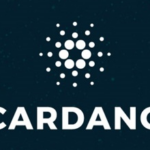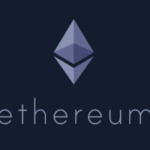Exploring Ethereum: L2 Scaling, Competition, and Traditional Finance Integration

Since its inception, Ethereum has been considered the foundation for both Web3 and traditional finance (TradFi) tokenization. However, in recent years, other blockchain platforms such as Solana and various alternative layer ones (Alt-L1s) have been gaining traction within the industry. As the adoption of blockchain technology continues to grow, the competition among these platforms is intensifying.
One of the main reasons why Ethereum has been so dominant in the blockchain space is its pioneering role in the development of smart contracts. Smart contracts enabled decentralized applications (dApps) to be built on the Ethereum network, allowing for the creation of a wide range of innovative projects in various industries. This has solidified Ethereum’s position as a key player in the crypto ecosystem.
Despite Ethereum’s successes, other blockchain platforms have emerged as strong competitors. Solana, in particular, has gained widespread attention for its high throughput and low transaction fees. Its unique consensus mechanism, called Proof of History, allows for faster transaction processing compared to Ethereum’s Proof of Work system. As a result, Solana has become a popular choice for developers looking to build scalable dApps.
In addition to Solana, there are several other alternative layer one blockchain platforms that are challenging Ethereum’s dominance. These platforms offer different features and capabilities that cater to specific use cases within the blockchain industry. Some of these platforms focus on scalability, while others prioritize security or decentralization. As a result, users have a wide variety of options to choose from when selecting a blockchain platform for their projects.
The increasing competition among blockchain platforms is driving innovation in the industry. Developers are constantly looking for ways to improve scalability, security, and user experience on their respective platforms. This has led to the creation of various solutions such as layer two scaling solutions, interoperability protocols, and decentralized finance (DeFi) applications that aim to enhance the functionality of blockchain networks.
Despite the growing competition, Ethereum remains a key player in the blockchain space. Its established network effect and robust developer community give it a significant advantage over its competitors. However, as other platforms continue to innovate and improve, Ethereum will need to adapt and evolve to maintain its position as the foundation for Web3 and TradFi tokenization.
In conclusion, the competition among blockchain platforms is heating up as the industry continues to evolve. While Ethereum has been a dominant force in the space, other platforms such as Solana and Alt-L1s are gaining traction with their unique features and capabilities. As adoption grows and competition intensifies, it will be interesting to see how these platforms continue to innovate and differentiate themselves in the increasingly crowded blockchain landscape.






